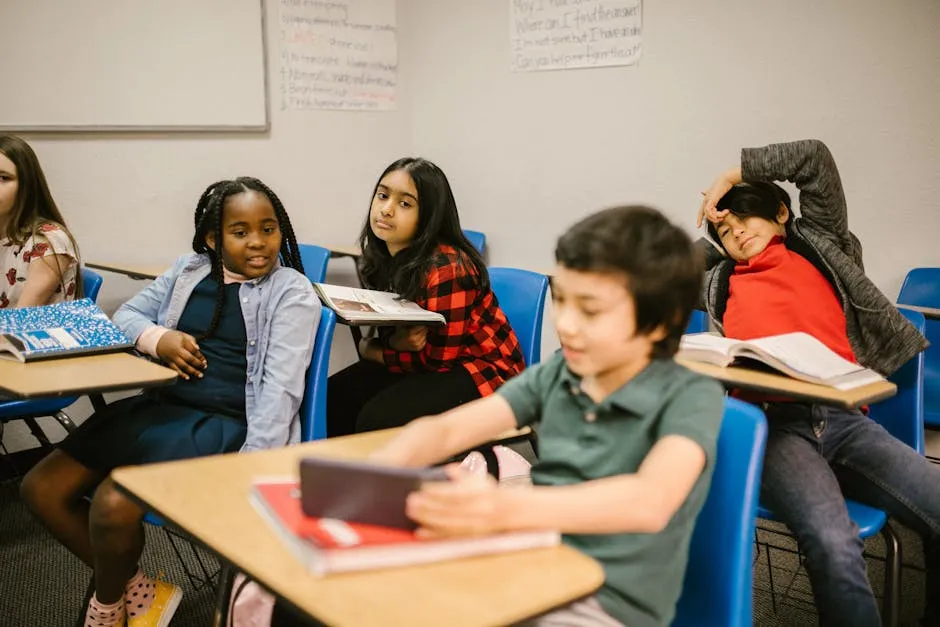Introduction
Bullying. Just hearing the word conjures images of schoolyard taunts and social media harassment. It’s a pervasive issue among youth, affecting their mental health and overall well-being. Bullying isn’t just a rite of passage; it’s a serious public health concern. According to recent studies, 20% to 56% of youth experience bullying annually. That’s a staggering number!
Now, let’s connect the dots. Bullying has a dark companion: suicide. The link between the two is alarming. In fact, research indicates that bullied youth are 2 to 9 times more likely to contemplate suicide than their non-bullied peers. The Centers for Disease Control and Prevention (CDC) reports that suicide is the second leading cause of death among individuals aged 15 to 29. This means that the stakes are high, and we must pay attention.
Statistics paint a grim picture of this connection. The CDC states that nearly 45,000 lives are lost to suicide each year in the United States alone. Among high school students, about 14% have considered suicide, with 7% actually attempting it. What’s more, at least half of youth suicides are linked to bullying experiences.
This article aims to dissect the relationship between bullying and suicide. Our goal? To explore key statistics, contributing factors, and preventive measures. We’ll delve into the heartbreaking realities faced by victims, illustrate the urgent need for intervention, and hopefully spark conversations about prevention. Because, let’s face it, tackling the issue of bullying is no laughing matter, but a little humor can help lighten the load as we navigate this serious topic together.
Speaking of navigating tough topics, you might find it helpful to dive deeper into the emotional landscape with “The Gifts of Imperfection” by Brené Brown. This book can help you embrace your vulnerabilities and foster resilience, essential qualities when dealing with the harsh realities of bullying.
Together, we can bring awareness to this critical issue. Let’s work toward creating safer environments where our youth can thrive, free from the shadows of bullying and the tragic consequences that may follow.

Bullying Victims and Suicide Risk
Increased Risk of Suicide
Bullying victims face a daunting reality. Research shows they are 2 to 9 times more likely to consider suicide than their peers who aren’t bullied. The Centers for Disease Control and Prevention (CDC) emphasizes this alarming statistic, shedding light on the severe implications bullying has on mental health. A study conducted in Hong Kong found that bullies and victims alike displayed higher tendencies for suicidal thoughts and behaviors. This connection underscores the urgent need for awareness and intervention.
Statistics on Suicide Attempts
The statistics regarding suicide attempts among bullied youth are equally striking. Studies indicate that approximately 20% of bullied adolescents attempt suicide compared to just 4% of those not subjected to bullying. A British study found that at least half of youth suicides are linked to bullying experiences. It’s critical to understand that while not every bullied youth will attempt suicide, the risk is significantly heightened.
The gravity of these findings cannot be understated. They prompt us to ask: How can we better support those affected? What preventive measures can be put in place to protect these vulnerable individuals? The answers could very well save lives.
If you’re looking for resources to help kids cope with bullying, check out “Stop Bullying: A Guide for Kids” by The American Psychological Association. This guide offers insights and strategies to empower children to stand up against bullies.

Family and Environmental Influences
Family dynamics and social environments wield substantial influence over a young person’s mental health, particularly regarding bullying and suicide. The home atmosphere plays a vital role in shaping emotional resilience. In homes where emotional support is plentiful, children often develop better coping mechanisms. Conversely, when families are strained, children may feel isolated and vulnerable.
Parental involvement is crucial. Kids who experience neglect or abuse at home often struggle more with peer bullying. A study revealed that children from non-nuclear families report higher instances of bullying, indicating that family structure can impact how children relate to their peers. Open communication within families can foster a sense of safety, enabling children to share their experiences without fear.
Social environments, such as schools and communities, further complicate this dynamic. Schools often become the battlegrounds for bullying. A lack of anti-bullying policies can exacerbate tensions. When children don’t feel safe in their social settings, the risk of suicide increases.
Moreover, peers can significantly influence a child’s self-esteem. In a supportive circle, children thrive; in a toxic one, they may sink into despair. For many, finding a refuge from bullying in family or friends is essential. If these supports are lacking, the consequences can be dire.

To foster resilience in children, consider exploring “Raising Resilient Children” by Robert Brooks. This book provides practical strategies for parents to nurture resilience and emotional strength in their children.
Cyberbullying as a Catalyst
Emergence of Cyberbullying
Technology has revolutionized our lives in many ways, but it also opened new avenues for bullying: enter cyberbullying. Unlike traditional bullying, this digital form is relentless, lurking behind screens and invading personal spaces. The anonymity of online interactions emboldens aggressors, making it easier for them to harass victims without facing immediate consequences. This transformation has led to an alarming uptick in suicide rates among bullied youth.

Statistics on Cyberbullying
The statistics surrounding cyberbullying are staggering. Recent studies indicate that about 14.9% of adolescents have experienced cyberbullying, with a significant overlap in those who have attempted suicide. A correlation exists: victims of cyberbullying are more likely to contemplate or attempt suicide compared to their peers.
In fact, research shows that bullied youth are two to nine times more likely to consider suicide than non-bullied peers. This startling statistic underscores the urgency of addressing cyberbullying’s impact on mental health. Among high school students, 25% of those who faced cyberbullying attempted suicide, compared to just 10% of their non-bullied counterparts. With the rise of technology, the need for awareness and preventive measures has never been more critical.
It’s time to take a stand against the online harassment that wreaks havoc on young lives. By fostering supportive environments both online and offline, we can work towards reducing these alarming statistics and protecting our youth from the devastating effects of bullying and cyberbullying.

Prevention Strategies and Support Resources
School and Community Programs
Anti-Bullying Policies
Effective anti-bullying policies are essential in schools. They provide a framework for addressing bullying and fostering a safe environment. Schools need to implement clear rules that outline unacceptable behaviors and the consequences for bullying. Programs like Olweus Bullying Prevention Program have shown promise in reducing bullying incidents. These initiatives encourage students to report bullying and promote bystander intervention. Moreover, training teachers to recognize and address bullying can create a supportive atmosphere.
Schools should also engage parents and the community. Hosting workshops can inform families about the signs of bullying and how to respond. When parents are involved, it reinforces the message that bullying is not tolerated. Community-wide efforts, such as partnerships with local organizations, can extend anti-bullying initiatives beyond school walls.

Mental Health Support
Mental health resources are crucial for both victims and bullies. Victims of bullying often experience anxiety, depression, and low self-esteem. Access to counseling services can help them navigate these feelings. School counselors should be trained to identify mental health issues related to bullying. Providing support groups can also create safe spaces for victims to share their experiences and find comfort in numbers.
Conversely, bullies may also benefit from mental health support. Often, their aggressive behavior stems from underlying issues such as trauma or emotional distress. Counseling can address these root problems, promoting healthier coping mechanisms. Schools should implement programs like Restorative Justice, which encourages accountability and personal growth among bullies. This dual approach addresses the needs of both victims and aggressors, fostering a more empathetic school culture.

Role of Parents and Guardians
Recognizing Signs of Bullying and Depression
Parents play a vital role in identifying bullying and its effects. They should be vigilant for signs that their child may be involved, either as a victim or a bully. Changes in behavior, such as withdrawal from friends, sudden changes in grades, or reluctance to attend school, can signal problems. Open communication is key. Parents should create an environment where children feel safe discussing their experiences.
Additionally, it’s important for parents to recognize signs of depression. Symptoms include persistent sadness, irritability, and loss of interest in previously enjoyed activities. If a child expresses feelings of hopelessness or talks about self-harm, parents must take these seriously. Seeking professional help is crucial in these situations.

Open Communication
Encouraging open discussions about bullying and mental health is essential. Parents should regularly check in with their children about their experiences at school. This can help build trust and ensure children feel comfortable sharing their struggles. By fostering a supportive environment, parents can empower their children to speak up about bullying.
Moreover, parents should educate themselves about the resources available. Knowing where to turn for help—whether it’s school counselors, hotlines, or local support groups—can make a significant difference. When parents are proactive, they set an example for their children, demonstrating the importance of addressing bullying and mental health issues head-on.

Open Communication
Open communication is paramount when addressing bullying and its devastating impacts. Children should feel safe discussing their experiences without fear of judgment or dismissal. Parents, educators, and caregivers need to create a supportive atmosphere that encourages kids to share their feelings openly.
Start by establishing regular check-ins. Ask about their day in a way that shows genuine interest. For instance, instead of the usual “How was school?” try something like, “What was the most interesting thing you learned today?” This invites them to share more than just surface-level responses.
It’s also essential to listen actively. When children talk about their experiences, validate their feelings. Statements like “I can’t imagine how that felt” or “It’s okay to feel upset” can go a long way in making them feel understood. Reassure them that they are not alone and that their feelings matter.
Moreover, encourage children to express themselves through various channels. Some may prefer writing in a journal or drawing. This can be especially helpful for those who find verbal communication challenging.
Educators play a crucial role too. Schools should implement programs that teach students how to communicate effectively, not only with peers but also with adults. Anti-bullying campaigns can include workshops focused on empathy and active listening.
Establishing a culture of openness leads to greater awareness of bullying issues. Children are more likely to report bullying if they feel supported. This proactive approach can significantly reduce the stigma around discussing mental health and bullying.
Lastly, keep the conversation ongoing. Regular discussions about bullying, mental health, and emotional well-being can help normalize these topics. Children who are educated about these issues are more equipped to recognize them in themselves and others.
By fostering open communication, we can create a safe environment where children feel empowered to speak up about bullying. This is a vital step in preventing the tragic consequences that can result from silence and isolation.

If you want to explore the emotional nuances of these discussions, consider “The Power of Vulnerability” by Brené Brown. This book dives deep into the importance of vulnerability and how it can lead to a more fulfilling life, crucial for both parents and children navigating these tricky waters.
Conclusion
Bullying and suicide are intertwined issues that demand our immediate attention. The statistics speak volumes: bullied youth have a significantly higher likelihood of contemplating suicide. Awareness is key, but it’s not enough. We must implement preventive measures and support systems to protect our children.
First, let’s recap the vital points. Bullying, in its many forms, can lead to devastating mental health outcomes. Victims are often left feeling isolated and hopeless, directly increasing their risk of suicide. Additionally, the stigma surrounding mental health and bullying can prevent open discussions, leaving many children to suffer in silence.
We must take action! Engage in conversations about bullying with your friends, family, and community. Share this information widely. The more we discuss these issues, the more we can normalize them.
Support mental health initiatives that provide resources for both victims and bullies. Schools should prioritize mental health education and anti-bullying policies. Advocate for programs that teach children empathy, resilience, and effective communication.
Let’s push for stronger anti-bullying policies that hold schools accountable. Every child deserves to feel safe and supported in their environment.
To everyone reading this: your voice matters. Speak up against bullying and support those who are struggling. Together, we can make a difference. Let’s ensure that every child has the opportunity to thrive without the shadows of bullying looming over them.

FAQs
What are the most common forms of bullying?
Bullying takes various forms, including physical, verbal, emotional, and cyberbullying. Physical bullying involves hitting or pushing, while verbal bullying includes name-calling or threats. Emotional bullying can manifest as exclusion or manipulation, and cyberbullying occurs through online platforms, like social media or messaging apps.
How can I support someone who is being bullied?
If you know someone who is being bullied, your support is crucial. Begin by listening without judgment. Encourage them to share their feelings and reassure them that it’s not their fault. Help them document incidents of bullying and suggest they talk to a trusted adult. Offer to accompany them if they decide to report the bullying.
What should I do if I am being bullied?
If you’re experiencing bullying, know that you are not alone. Reach out to someone you trust, like a friend, family member, or teacher. Document what’s happening, including dates, times, and descriptions of incidents. Report the bullying to a trusted adult or school authority. Remember, there’s no shame in seeking help.
Are there specific resources for LGBTQ youth?
Absolutely! Many organizations support LGBTQ youth facing bullying and mental health challenges. The Trevor Project provides crisis intervention and resources tailored for LGBTQ individuals. PFLAG offers peer support and education for families and allies. Local LGBTQ centers often have resources and support groups as well.
How can schools effectively address bullying?
Schools can take several steps to combat bullying. Implementing comprehensive anti-bullying policies is essential. Educators should receive training on recognizing and addressing bullying. Schools can establish support systems, such as counseling services and peer support groups. Encouraging open communication between students and staff can also help create a safe environment.
Please let us know what you think about our content by leaving a comment down below!
Thank you for reading till here 🙂
For more information on how bullying correlates with suicide, check out the suicide bullying statistics.
All images from Pexels




